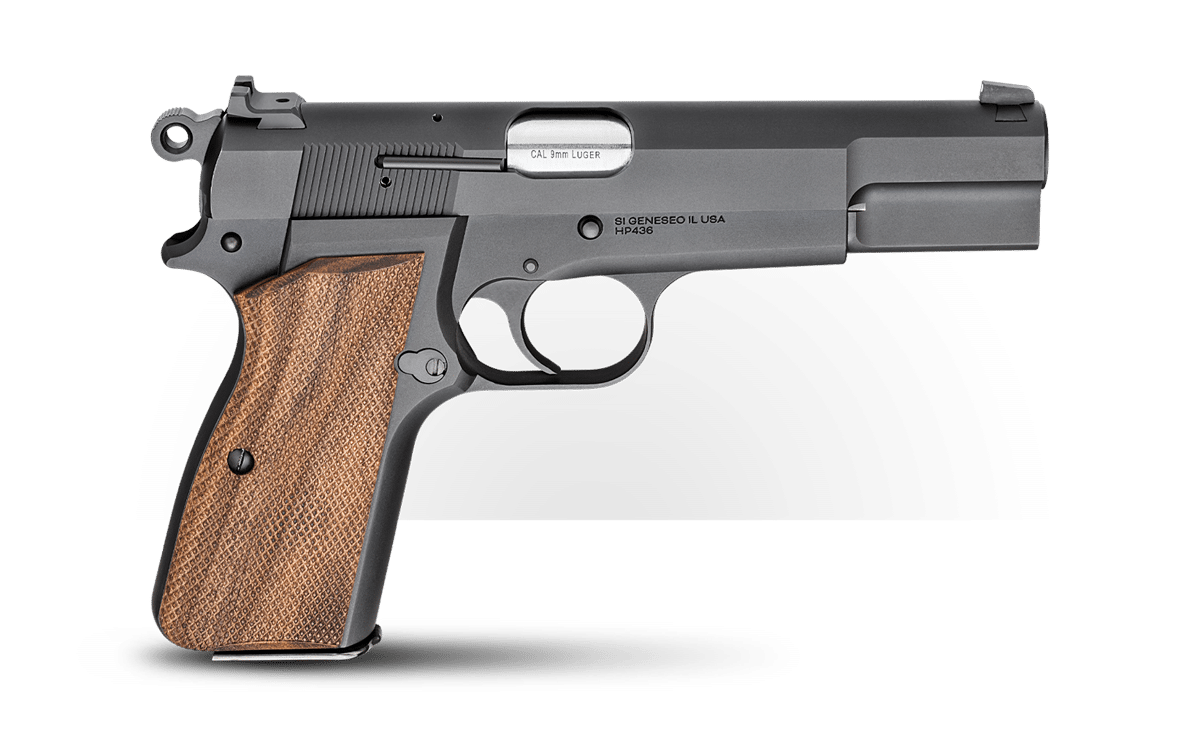A Canadian Belgian? The Inglis Hi-Power
February 9th, 2023
5 minute read
Unless you were in Afghanistan during its recent implosion, we modern folk really cannot comprehend what Europe was like in 1940. The Nazi juggernaut rolled across Belgium, the Netherlands, Luxembourg, and France in a mere six weeks. The transformation would have seemed apocalyptic.
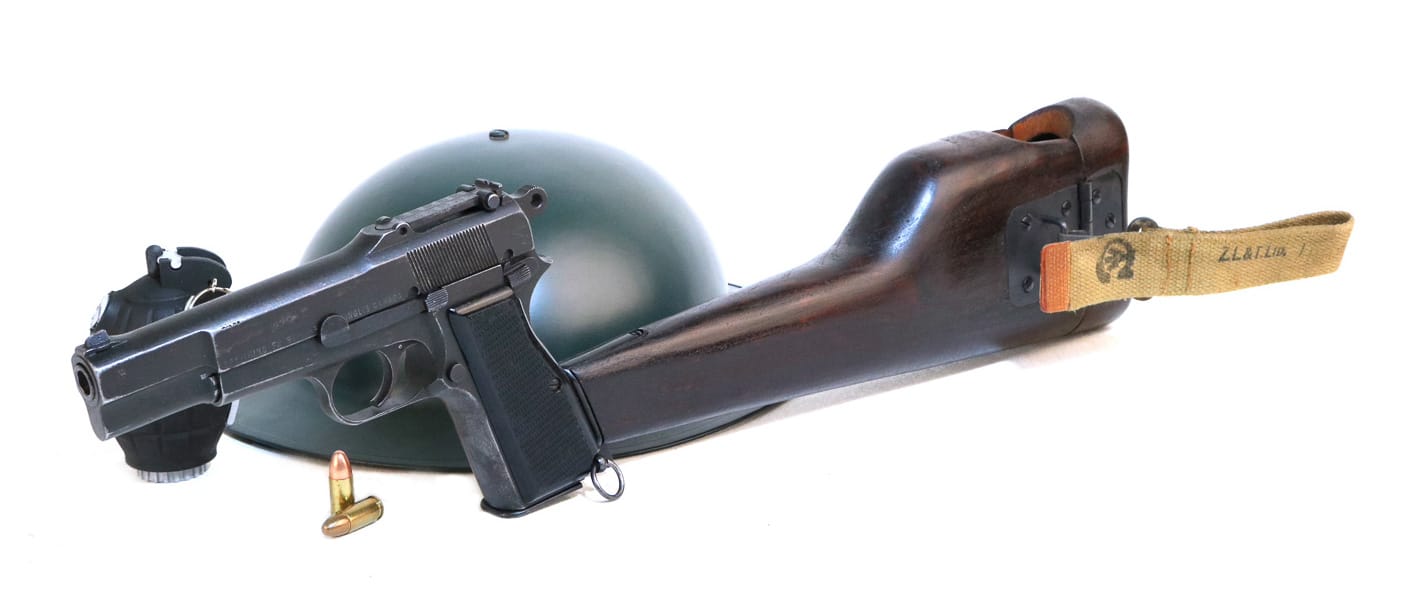
We have the benefit of hindsight. We know that Hitler blew his own miserable brains out on April 30, 1945, bringing the whole ghastly hemoclysm to a gory sordid close. We appreciate that, despite the fact that it would take five long years to get there, there was still hope. For those who lived it, however, there could be no comparable clarity. As far as they knew the Nazi jackboot was there to stay.
The Setting
The GP-35 Hi-Power was born in response to a French tender for a new military pistol. That original gun was referred to as the Grand Rendement (“High Yield”) or Grand Puissance (“High Power”). The patent for John M. Browning’s 1911 was still active at the time, so the great designer was forced to contrive a fresh new pistol that did not infringe on his own previous gun. Browning first filed the patent for what would become the Hi-Power in 1923.
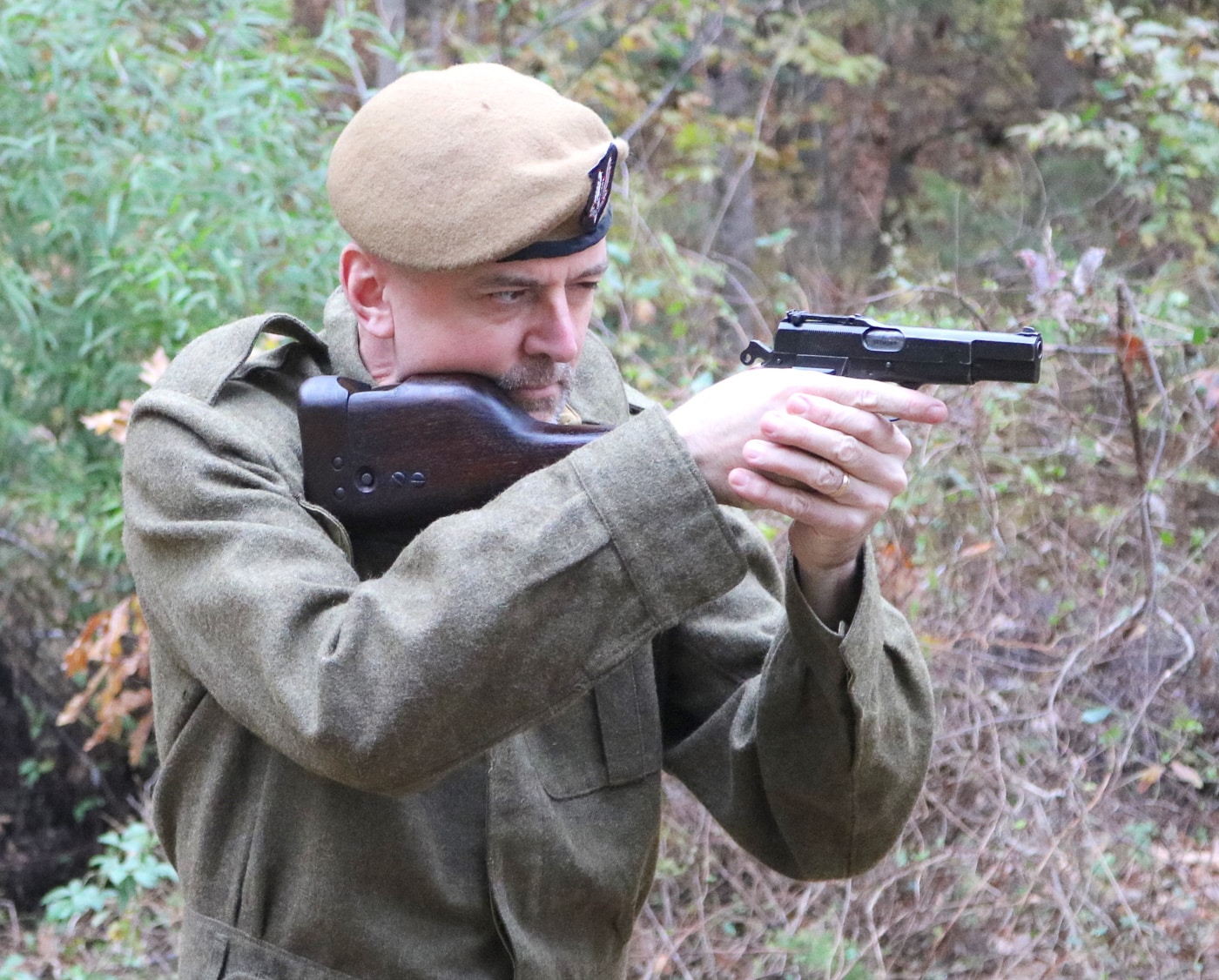
That original prototype sported a 16-round double-column, single-feed magazine designed by Browning’s fellow genius the Belgian Dieudonné Joseph Saive. It was also striker-fired and featured a novel locked-breech action. Unfortunately, in November of 1926, John Browning died.
Dieudonné Saive took up the mantle to complete the GP-35. The original 1911 patents expired in 1928, so Saive could proceed unfettered. The final version was shrunken slightly to accept a 13-round magazine and featured a superlative single-action trigger. It first hit the streets in 1935 and was well-received. Though the French foolishly passed on the Hi-Power in favor of a domestic design, the GP-35 remained arguably the finest combat handgun in the world at the onset of WWII.
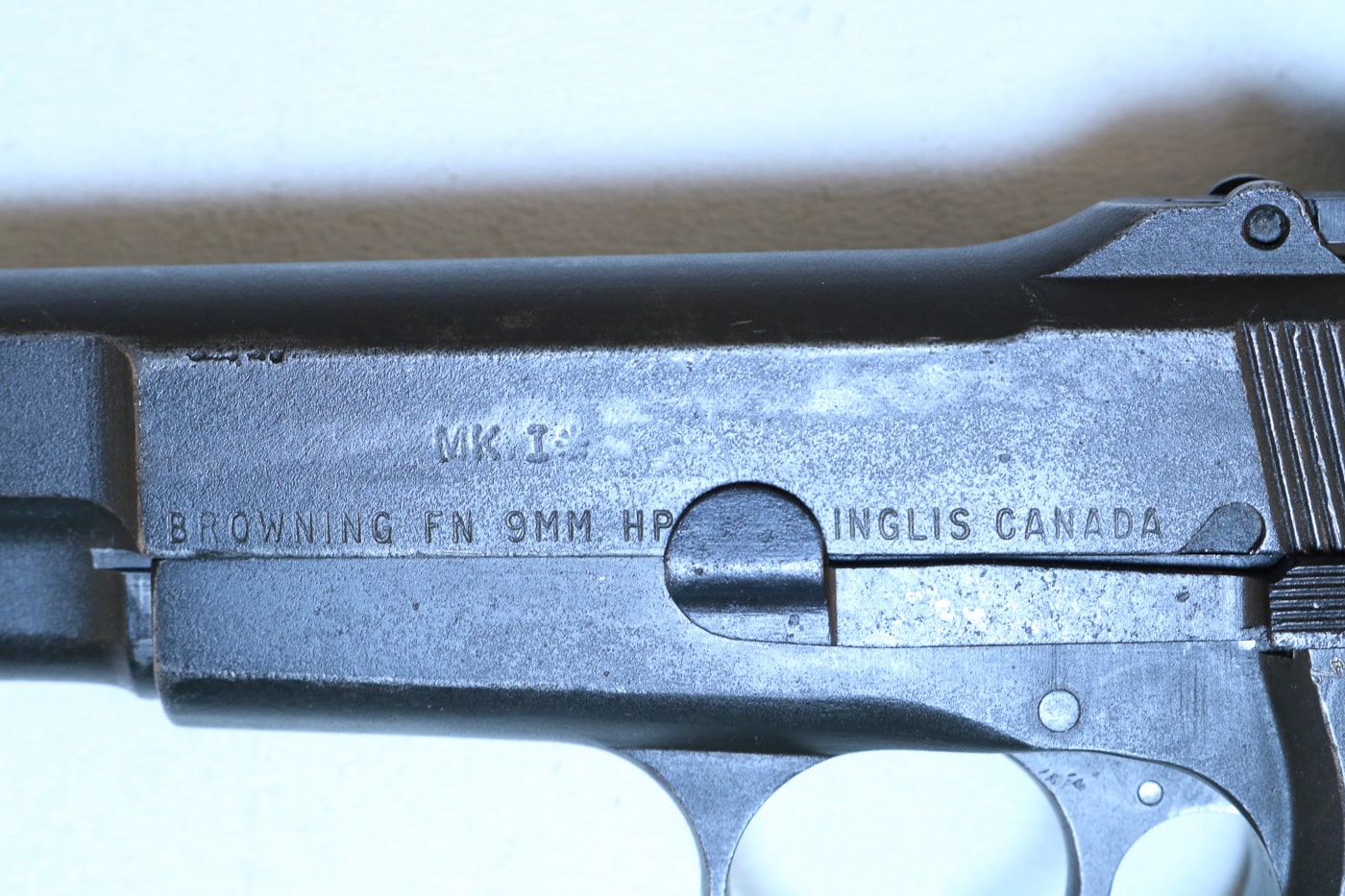
The End of the World
When the Wehrmacht overran Belgium, the two executives most responsible for Hi-Power production were both in England. They wisely chose not to return home given the circumstances. Dieudonné Saive was trapped in Belgium, but later escaped to England in 1941. He brought along an invaluable first-person technical knowledge of the Hi-Power pistol. Once safely in the UK, Saive went to work reproducing the technical drawings for the GP-35 from memory.
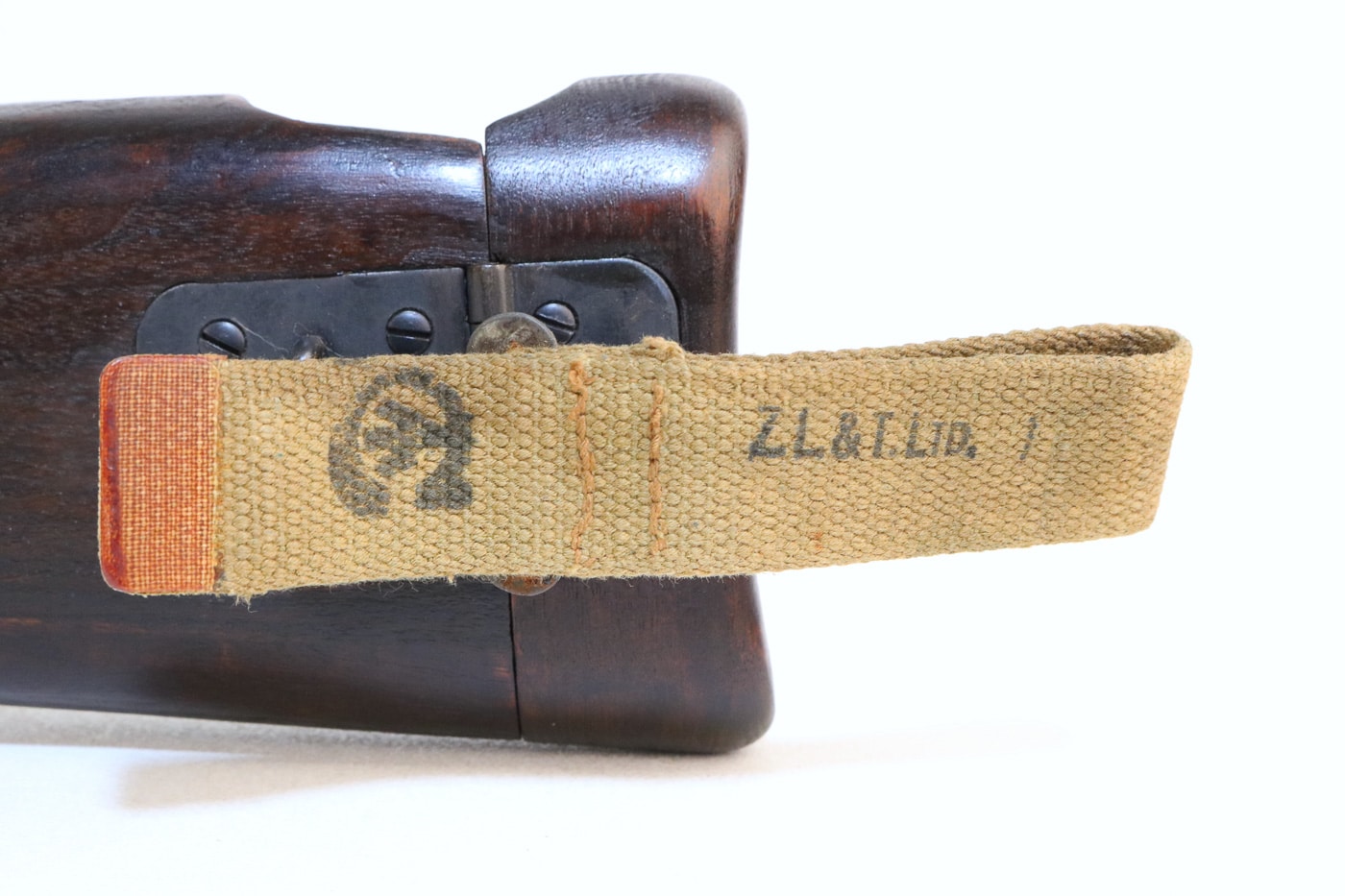
The Nazis compelled the Belgian workforce to produce Hi-Power pistols for their own use. These weapons were given the German designation 9mm Pistole 640(b). The Pistole 640(b) was particularly prized by the Waffen SS and fallschirmjagers.
Meanwhile, the entire planet was aflame. In the spring of 1943, the Chinese government contracted with John Inglis and Company in Canada for 180,000 Hi-Power pistols via the Mutual Aid Plan. These Chinese pistols were ordered with adjustable tangent rear sights and wooden shoulder stock-cum-holster assemblies akin to those of the C96 Mauser Broomhandle. The formal appellation was the No. 1 Mk I*. Inglis paid a modest royalty fee per each gun produced.
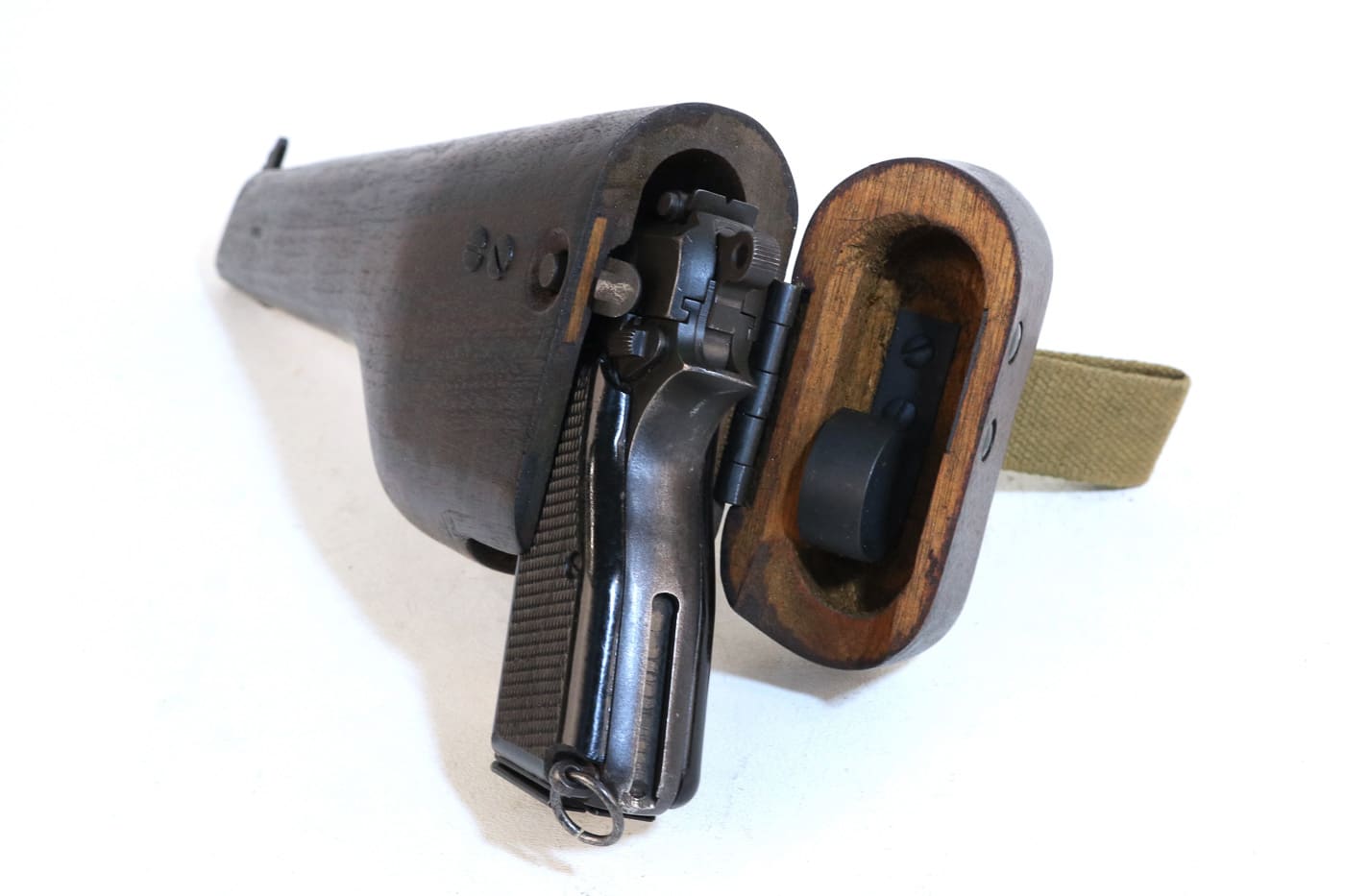
In addition to the Chinese contract, the British Special Operations Executive requested 50,000 copies with fixed sights and without the shoulder stocks for use by resistance fighters in occupied Europe. The use of the commonly available 9mm cartridge made the Hi-Power an obvious choice for such clandestine work.
Only about 4,000 Chinese No. 1 Mk I* Hi-Powers made it over the Hump into the Pacific theater, and these weapons were poorly utilized. As a result, most of the Inglis production ended up in Europe.
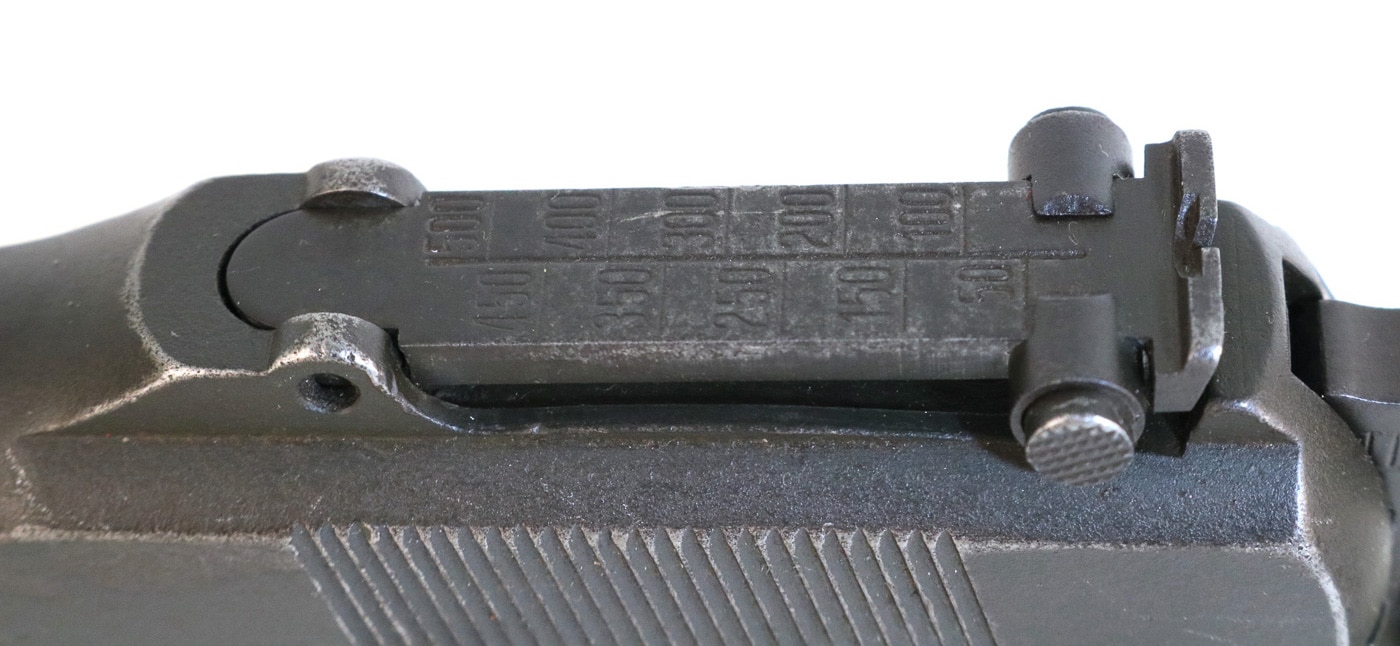
Technical Details
The adjustable tangent rear sight on these old Hi-Power pistols was optimistically graduated out to 500 meters. The Hi-Power shoulder stock was indeed quite similar to that of the C96 Broomhandle. The mounting attachment was almost identical, and the stock also opened at the rear to double as a holster. A web frog attached to the side of the stock allowed the device to hang from a belt.
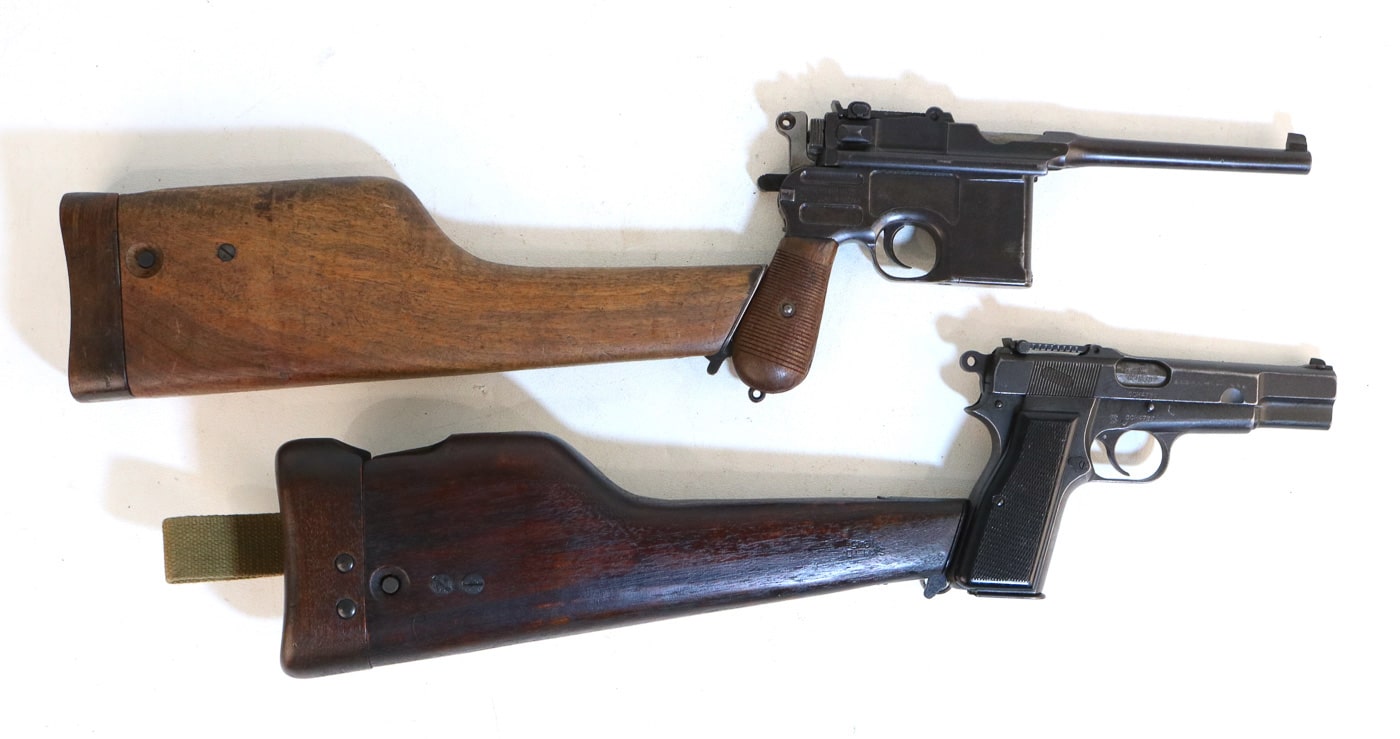
Firing the stocked Hi-Power feels about as natural as strolling into your local church in your underwear. Care must be exercised not to let the reciprocating slide nip anything soft and fleshy. However, the end result is indeed a more stable firing platform than is the case with the pistol not thusly adorned.

The greatest impediment to perfection on these old Hi-Powers, in my humble opinion, was the magazine disconnect safety. The original French contract stipulated this ghastly thing, and it took a toll on the single action trigger. Many original users just removed it.
Denouement
The Hi-Power was the only handgun in series production that saw widespread use by both the Axis and the Allies during World War II. A vintage shoulder-stocked Inglis No. 1 Mk I* Hi-Power makes a welcome addition to any seasoned gun collection. However, these old guns are terribly expensive. By contrast, the new Springfield Armory SA-35 is just screaming for that coveted spot in either your nightstand or your waistband.
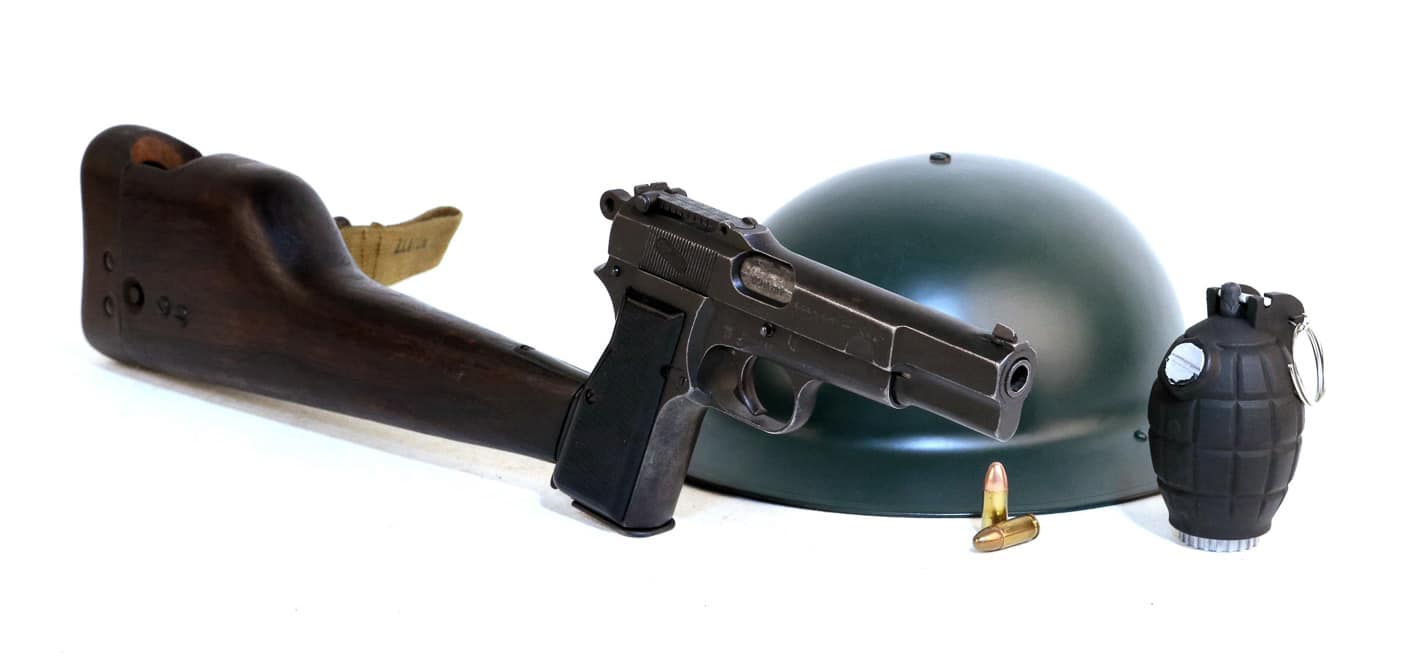
The SA-35 is a simply magnificent piece of iron. An Information Age rendition of that classic design, the SA-35 is upgraded with modern tactical sights, a 15-round magazine, and the same extraordinary quality we have all come to expect from Springfield Armory. With an MSRP of $799, the SA-35 is also hugely more affordable than any comparable steel and walnut combat handgun. I’m utterly smitten with mine.
Special thanks to www.worldwarsupply.com for the replica military equipment used in our photographs.
Editor’s Note: Please be sure to check out The Armory Life Forum, where you can comment about our daily articles, as well as just talk guns and gear. Click the “Go To Forum Thread” link below to jump in and discuss this article and much more!
Join the Discussion
Featured in this article
Continue Reading
Did you enjoy this article?

 95
95






